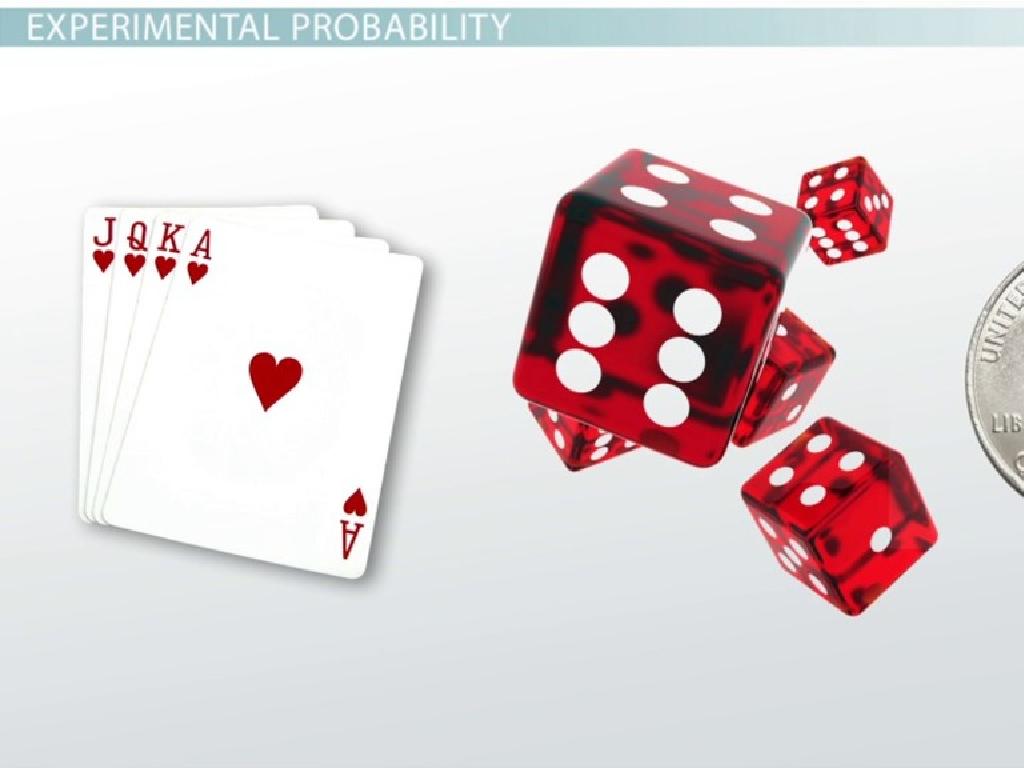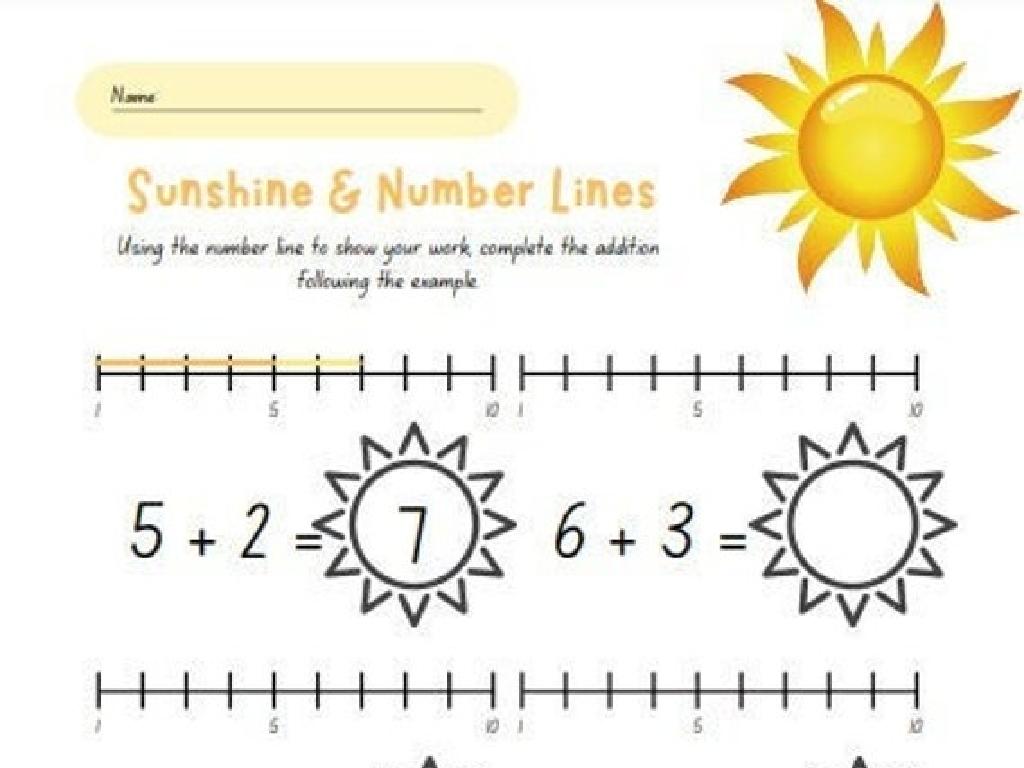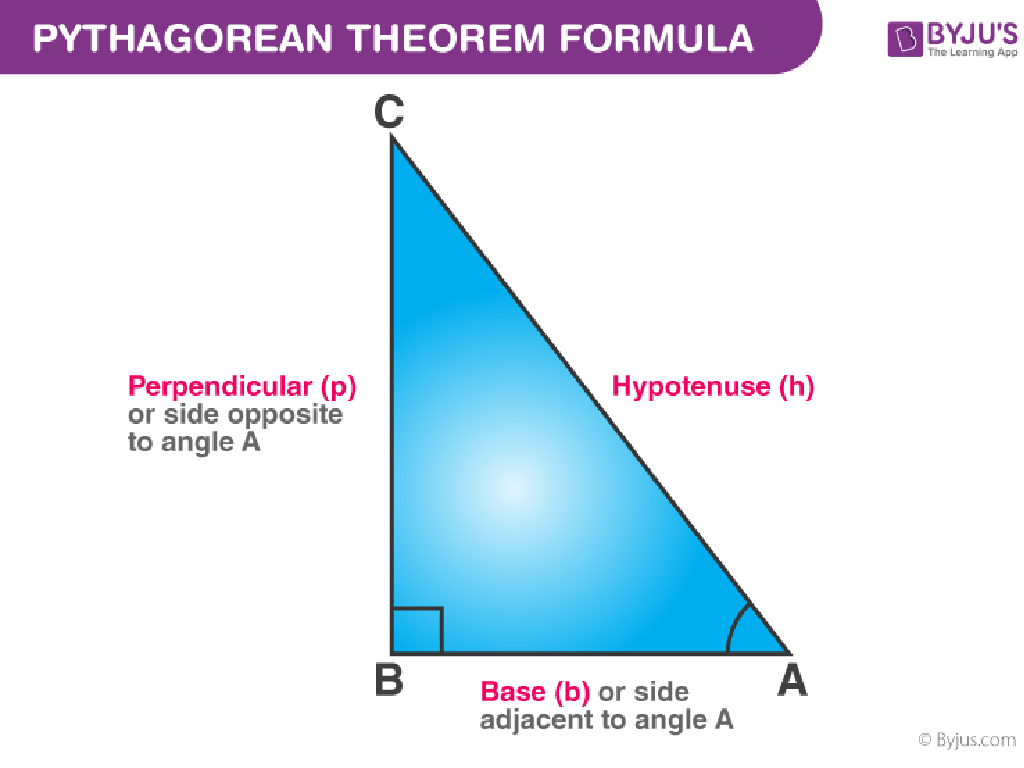Powers Of Ten
Subject: Math
Grade: Seventh grade
Topic: Exponents
Please LOG IN to download the presentation. Access is available to registered users only.
View More Content
Welcome to Exponents: Mastering Powers of Ten
– What are Powers of Ten?
– Powers of ten have a base of 10 raised to a number, e.g., 10^3 = 1000.
– Exponents make math easier
– Using exponents, we can write large numbers compactly, like 10^6 instead of 1,000,000.
– Today’s goal: Master Powers of Ten
– Understand and apply the concept of 10 raised to different powers.
– Practice with real examples
– We’ll solve problems like 10^2 x 10^3 and see how it simplifies to 10^5.
|
This slide introduces the concept of powers of ten and sets the learning objective for the class, which is to understand and be able to work with powers of ten. Begin by explaining what powers of ten are and how they are represented using exponents. Emphasize how exponents help simplify mathematical expressions and make it easier to work with very large or very small numbers. The goal for today’s lesson is for students to become comfortable with calculating and recognizing patterns in powers of ten. Include practice examples to reinforce learning, such as multiplying and dividing powers of ten, to show how exponents add and subtract.
Understanding Exponents
– Exponent definition
– An exponent shows how many times a number, the base, is multiplied by itself.
– Parts of an exponential expression
– An exponential expression has a base and an exponent, e.g., in 3^4, 3 is the base, 4 is the exponent.
– Base and exponent roles
– The base is the number being multiplied; the exponent tells how many times it appears in the multiplication.
– Visualizing exponential growth
|
This slide introduces the concept of exponents, which are a fundamental part of algebra and used to express repeated multiplication. The base is the number that is repeatedly multiplied, and the exponent indicates how many times this multiplication occurs. For example, 2^3 means 2 is multiplied by itself three times (2 x 2 x 2). It’s important for students to recognize the parts of an exponential expression to understand how to solve them. Use visual aids to show exponential growth, such as squares for 2^2, cubes for 2^3, and so on, to help students grasp the concept of increasing magnitude with higher exponents.
Exploring Powers of Ten
– Understanding 10 as a base number
– Multiplying by ten and decimal shift
– Each time we multiply by 10, the decimal point moves one place to the right.
– Examples: 10^1, 10^2, 10^3
– 10^1 = 10, 10^2 = 100, 10^3 = 1000, and so on.
– Observing patterns in powers of 10
– Notice how the number of zeros increases with the exponent.
|
This slide introduces the concept of using 10 as a base number in exponents and how it affects the placement of the decimal point. Emphasize that the base number 10 is fundamental in our number system, and understanding its powers is crucial for grasping the concept of exponents. Show how each time we multiply by 10, the decimal point moves to the right, making the number ten times larger. Provide examples like 10^1, 10^2, 10^3 to illustrate the pattern and help students recognize the relationship between the exponent and the number of zeros in the result. Encourage students to explore this pattern with higher powers of 10 to solidify their understanding.
Visualizing Powers of Ten
– Number line & powers of ten
– Visual tool to understand exponents
– Pattern: step up by ten’s power
– Each move right increases tenfold
– Activity: Map values on number line
– Place 10, 100, 1,000 on a line & see the pattern
|
This slide aims to help students visualize the concept of powers of ten using a number line. A number line is a great way to concretely see how each step to the right increases the value by a power of ten (e.g., 10^1, 10^2, 10^3, etc.). During the activity, students will practice placing values like 10, 100, and 1,000 on the number line to reinforce the pattern of increasing powers. This visual and interactive approach is crucial for deepening their understanding of exponents. Encourage students to discuss the pattern they observe and predict the next power of ten before placing it on the number line.
Real-World Applications of Powers of Ten
– Importance of Powers of Ten
– Space and Population Examples
– Space: Light years as 10^16 meters, Population: 7.8 billion as 7.8 x 10^9
– Microscopic Measurements
– Size of bacteria roughly 10^-6 meters
– Grasping Large/Small Quantities
– Powers of ten simplify understanding of vast or tiny quantities
|
This slide aims to show students the practical significance of powers of ten in various real-world contexts. By understanding powers of ten, students can comprehend and calculate large distances, such as those in space measured in light years, or large numbers, such as the human population. Similarly, powers of ten are essential in the field of microbiology, where scientists measure in micrometers. Emphasize that powers of ten provide a simplified way to express and understand extremely large or small numbers, making them manageable and relatable. Encourage students to think of other examples where powers of ten might be applicable in their daily lives.
Practice Problems: Powers of Ten
– Reviewing exponent concepts
– Group problem-solving activity
– Solve exponent problems as a class to reinforce learning
– Individual practice on powers of ten
– Calculate powers of ten independently to test understanding
– Discuss solutions and strategies
|
This slide is aimed at reinforcing the students’ understanding of powers of ten through practice problems. Begin with a quick review of the exponent rules learned in the previous lessons. Then, engage the class in a group problem-solving activity to solve exponent problems together, fostering a collaborative learning environment. Afterward, assign individual practice problems focusing on calculating powers of ten, allowing students to apply what they’ve learned independently. Conclude with a discussion of the solutions and strategies used, providing an opportunity for students to learn from each other and clarify any misunderstandings. The teacher should circulate the room during individual practice to offer guidance and support where needed.
Class Activity: Exponent Scavenger Hunt
– Search for powers of ten in real life
– Team up for the scavenger hunt
– Complete the hunt challenges
– Present your discoveries
|
This interactive class activity is designed to help students recognize the application of powers of ten in everyday contexts. Divide the class into small teams and provide a list of items or scenarios where powers of ten are evident, such as in distances (kilometers, meters, millimeters), computer storage (bytes, kilobytes, megabytes), or scientific measurements (microorganisms, cells, etc.). Each team will search for and document examples, ensuring they understand how to express these quantities using exponents. After the scavenger hunt, teams will share their findings with the class, fostering a collaborative learning environment. Possible activities include measuring classroom objects, estimating quantities in the schoolyard, or researching facts about the universe’s size. The goal is to solidify their understanding of exponents through practical application.
Conclusion: Powers of Ten and Exponents
– Recap on Powers of Ten
– Review how 10^n represents ten multiplied by itself n times.
– Significance of Exponents
– Exponents simplify multiplication and show patterns in numbers.
– Open floor for Q&A
– Summarize key takeaways
– Ensure understanding of the power of ten’s role in place value and scientific notation.
|
As we wrap up today’s lesson on the powers of ten, let’s revisit the main points. Remember, powers of ten are a shorthand for expressing repeated multiplication of ten. Understanding exponents is crucial as they are widely used in higher-level math, science, and various real-world applications like computing and finance. Now, let’s open the floor for any questions to clarify doubts. Encourage students to ask questions about any part of the lesson they found challenging. After the Q&A, summarize the key concepts to reinforce learning and ensure students are comfortable with using powers of ten and recognizing their importance in mathematics.






